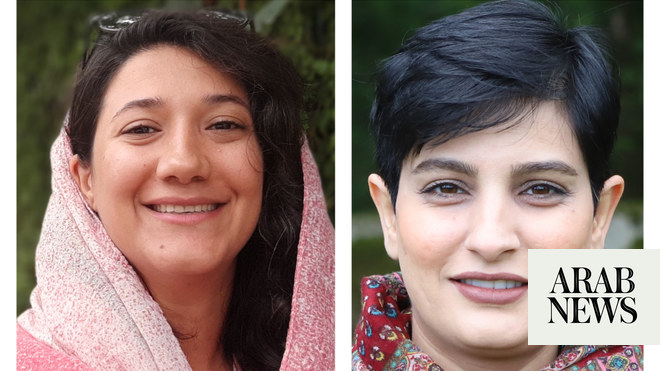RIYADH: Just as Walt Disney founded one of the world's largest and most influential entertainment conglomerates, an Egyptian journalist is being hailed as the “UAE's Walt Disney” for his role in shaping the region's media landscape with Majid Magazine.
For many Arab adults now in their fifties, the magazine and its beloved characters like Majid, Kaslan Zidan and Captain Khalfan are cherished symbols of childhood joy. But few know the creative genius behind these cherished memories. Ahmed Omar, who passed away on August 9 at the age of 85, is one of them.
His vision and storytelling skills have been instrumental in shaping the magazine's enduring legacy.
Born in Egypt in September 1939, Omar began his life's journey with words and stories.
He developed a passion for reading from an early age, and school and public libraries became his sanctuaries, where he explored the world of diverse books and developed a deep love for literature.
Omar frequently visited the Azbakya bookstore in Cairo, where he found cheap second-hand books, and through this he built a personal library filled with a wide range of titles. His extensive reading was instrumental in shaping his vision and enriching his ideas, which later came to light in his literary works.
He read books to build up a deep reservoir of knowledge, and was fascinated by classical literature from an early age. The novels of Naguib Mahfouz, which explore the complex life of Egyptian villages, had a profound impact on him. Omar was also shaped by the works of famous Egyptian writers such as Yusuf Idris, Gamal El-Ghitani, Mohamed Hassanein Haykal and other prominent writers.
He began his professional career at the UAE's Al-Etihad newspaper, where he was a founding member and helped lay the foundation for it. He later managed the local news section.
The most important achievement in his career was founding and becoming editor-in-chief of Majid Magazine for children in 1979. The idea for the magazine was born in Al-Etihad Daily and eventually turned into one of the most important children's magazines in the Arab world.
Omar realized that Arab children needed a publication that represented them, inspired their imaginations, and expanded their minds. He worked with a team of talented journalists and illustrators to create a magazine that would be a platform for Arab children to express their thoughts and feelings through words and pictures.
Through his tireless efforts, Omar has made the magazine a symbol of Arab childhood and a cherished part of people's memories for generations to come.
He spent most of his time in the magazine office, creating content with writers, planning, directing, and preparing issues. When a new issue was due to be printed, he would prepare several weeks’ worth of issues in advance.
The first issue of the magazine was published on February 28, 1979, and the 5,000 free copies quickly disappeared from the shelves. Majid, a character who represented human values rather than supernatural powers, captured the hearts of children. Majid Magazine maintained a weekly schedule every Wednesday and gained considerable popularity throughout the region.
Omar supervised and managed the magazine with the utmost care and attention for nearly 30 years. He provided guide articles for children, wrote scripts for the comic stories, and enriched each issue with beloved characters such as the clever Jackie and Captain Kalpan.
His editorials in Majid Magazine were weekly lessons for both children and adults, filled with educational messages and moral guidance. His contributions established him as an educational pioneer as he dedicated his knowledge to serving the younger generation and imparting valuable lessons.
Through his deep understanding of the nuances and secrets of childhood, Omar has managed to capture the attention of children across the Arab world, and the magazine's readership has grown to hundreds of thousands of young readers.
The late journalist believed that fostering a love of reading in children was a shared responsibility for families, schools, and magazines. He famously said, “It is important to instill reading habits in children at an early age, because they are harder to develop later. Introducing magazines to children is not just about providing entertainment, it is an important step in developing a lifelong love of reading.”
Since the magazine's inception, Omar has been committed to incorporating a distinct Gulf Arab flavor into the magazine's content, stories and characters. He has engaged renowned children's authors and cartoonists to preserve the unique identity of Gulf children, ensuring that the magazine resonates deeply with young readers across the Arab world.
Famous figures such as Kaslan Zidan, Faduli, Abu al-Durfa, Zakiya al-Zakiya, Shamsa and Dana, and Captain Khalfan and his assistant Fahman became beloved figures for the magazine's young readers.
Omar stressed that his magazine was designed to appeal to children growing up in traditional environments, instilling in them religious values, cultural awareness and pride in their Arab heritage.
As a testament to the success of his magazine, Majid's mail-order subscriptions flourished throughout the Arab world, with fans eagerly awaiting each issue every Wednesday. For decades, it competed with translated comic magazines such as Mickey (translated in Egypt under license from Disney) and Little Lulu (translated under license from Lebanon).
As a result, the magazine has evolved along with the social progress of the UAE and has embraced digital advancements with its YouTube channel and website. However, critics argue that despite the increased reach of modern technology, it is no longer as influential today as it was in the 1990s and 1980s.
